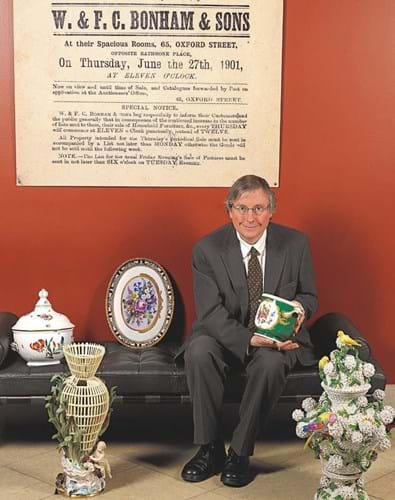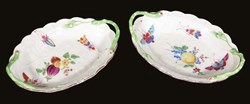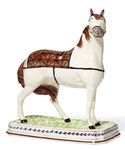Starter at 16
‘Man and boy’ literally, Sandon started back in 1975 as a “fresh-faced 16-year-old straight out of school”.
He was junior cataloguer in what was then Phillips, in a department newly formed when the Oriental and European Ceramics department split. “They had a vacancy for someone to join the European team. I was getting a good reputation through my dad (the well-known ceramics/Worcester expert Henry Sandon) and my own enthusiasm,” he recalls.
“They offered me the job. In those days to leave in the middle of my A-level course to go and work in London was quite a step, but of course it was a great training ground back in the ‘70s.”
Sandon first worked under Jo Marshall and John Matthews, then took over the department in 1988. As well as cataloguing countless sales, he started wielding the gavel in the early ‘90s.
He didn’t start taking auctions immediately, he says, because he was nervous of getting the numbers right, “but once you do one or two, it becomes second nature to you”.
“In a way it follows the thing through. When you see the items first of all in a collection in an owner’s home; then you produce the cataloguing and the research and discuss with the buyers, actually selling them in the rostrum is the final step. The complete process is something all auction specialists really want to try and do.”
“Being in London at the top of our game, handling the best porcelain in the world, one couldn’t really ask for anything more
Catalogue treasures
Sandon’s department also introduced hardback catalogues for significant single-owner collections. “It was the Watney sale that really started it. That was such a watershed sale, one couldn’t have done anything but a hardback catalogue at that time. From that so many single-owner collections were worthy of hardbacks.”
Those who attended the four Bernard Watney auctions (or others like those of Billie Paine or Geoffrey Godden) will know these catalogues serve as a record of some of the significant accumulations of English porcelain scholarship.
V&A milkmaid
What would be Sandon’s most exciting sale or discovery?
“It was going way back to the late 1970s, a little delft figure of a milkmaid which is now in the V&A,” he says. The figure, which was dated 1691 inside the pail, had been brought along to him on spec having been bought at Bermondsey market on a Friday morning.
“Figures in English delftware were the rarest things of all and to suggest it was English was almost unheard of at that time, but I just knew it was a special piece. I can’t remember the price – £3600 or £5200 come to mind – but it felt like a lot at the time. I suppose the same thing would be a quarter of a million in more recent times.”
Although Sandon will no longer be doing the daily commute to Bonhams, his relationship with the auction house continues as a consultant and advising long-standing customers.
He has plenty of other interests to pursue: lecturing and as president of various ceramic societies.
And he will also be continuing to appear as an expert on the BBC Antiques Roadshow, a role in which he is arguably a familiar face to an even wider audience. “I might write a book or two,” he adds.
Summing up his long tenure, he says: “What’s been nicest is I’ve always combined my hobby with my work… Being in London at the top of our game, handling the best porcelain in the world, one couldn’t really ask for anything more.
“Looking back at the auction world, it has served me so well and taught me so much.”
Sandon hopes in the future it will do the same for the next generation of specialists.














